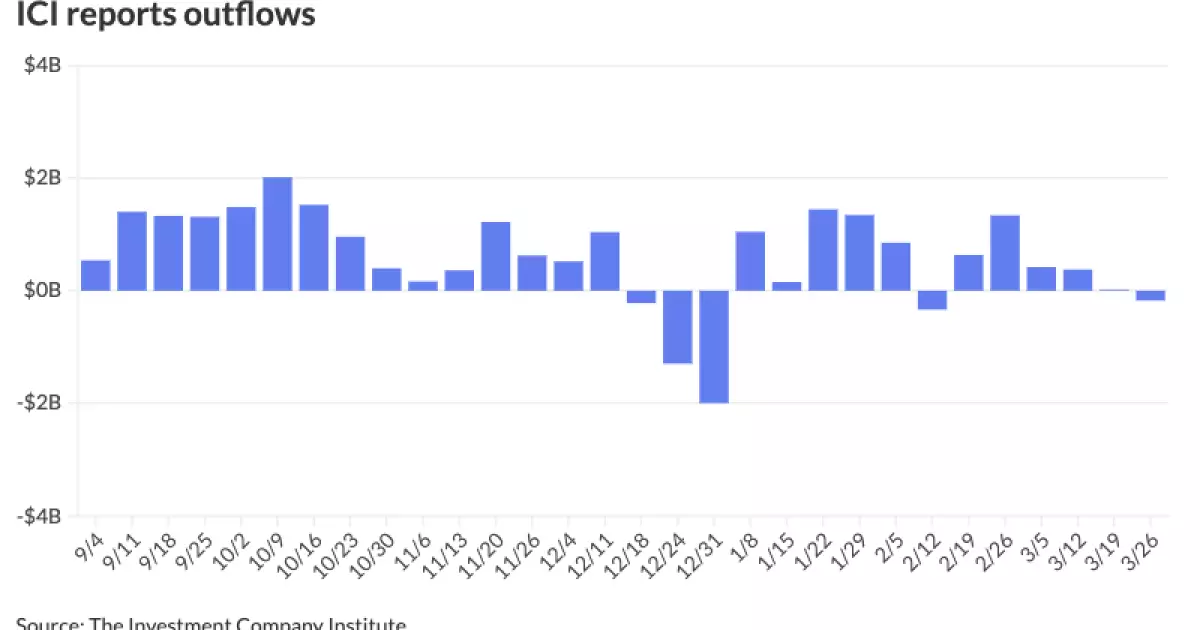The recent announcement of sweeping tariffs by former President Donald Trump marks a pivotal moment in the U.S. economic landscape. While tariffs are intended to protect American industries, they often trigger unintended consequences that ripple through the entire economy. The uncertainty surrounding these tariffs has not only destabilized bond markets but has also created fear among investors and business leaders alike. Ultimately, this chaos underscores the pressing need for a coherent and consistent trade strategy rather than reactive measures that serve to placate political pressures.
With municipalities holding firm amidst fluctuations, the real concern lies within the U.S. Treasuries, which showcased volatile behavior immediately following Trump’s speech. For professionals and investors, this volatility is not merely numbers on a screen; it represents real money lost, confidence shaken, and strategic decisions rendered even more complex. The mere announcement seemed to paralyze market confidence, highlighting a trend where traders are more responsive to sensational news than to solid economic fundamentals.
Market Sentiments: Fear Dictating Decisions
It’s essential to recognize that, as James Pruskowski of 16Rock Asset Management pointed out, fear—not fundamentals—is currently dictating market behavior. Although the global economy has shown signs of resilience, sentiments surrounding tariffs, tax reforms, immigration policies, and spending cuts have sown the seeds of dread. This pervasive fear is creating an environment ripe for stagflation, a scenario that could lead to economic stagnation coupled with rising inflation—something America cannot afford to navigate.
Corporate executives are bracing for impact, evidenced by alarming profit warnings from industry giants like FedEx. When the fear of a downturn looms larger than the prospect of growth, it stifles innovation and investment. CEOs are finding themselves stuck between wanting to push forward and the looming uncertainty, which therefore puts the brakes on expansion plans. The potential for a recession is causing hesitation that could have long-lasting effects on project timelines and hiring strategies.
Muni Bonds: Stability in a Sea of Uncertainty
Despite the chaotic landscape, municipal bonds have shown remarkable resilience. As Pruskowski mentioned, while stress is emerging, particularly in sectors like healthcare and education, the fundamentals of the municipal bond market are largely intact. The maintaining of ratios—67% for the two-year municipal to U.S. Treasuries—shows that there is still a safety net for investors who are weary of the market’s erratic trends.
But let’s not get complacent. The discussions around capping the muni bond tax exemption at 28% serve as a warning signal that all is not well in the larger fiscal environment. The instinctual belief that each historical attempt to dampen this exemption will fail is naive. Our public finance landscape is already under threat from various political maneuvers and shifts in fiscal policy. As such, advocates must remain vigilant, prepared to counteract these disruptions to ensure the survival of what is, in essence, a crucial funding mechanism for public services.
The Discrepancy Between Data and Action
Economic indicators are sending mixed signals. While some data points hint at softness, others remain strong. A glaring discrepancy exists between the assessment of financial fundamentals and the action—or lack thereof—taken by the Federal Reserve. While inflation remains a concern, issues such as dwindling consumer confidence and rising recession risks should warrant equal attention. Ignoring the reality of stagflation risks because of an overemphasis on inflation could lead to misguided decisions with long-term consequences.
This selective focus of the Fed could be likened to driving while only glancing at the rearview mirror. In a time when economic data is volatile, a nuanced approach must replace rigid strategies— we cannot afford to become ensnared in political dogma at the expense of economic reality. Policymakers need to adapt swiftly, shifting gears based on genuine data and the changing sentiment among investors and consumers.
A Call for Practical Governance in a Chaotic Climate
In sum, it is clear that today’s economic landscape is fraught with challenges that merit a reevaluation of our governance strategies. Politicians face immense pressure to respond forcefully, but we must encourage a return to practical governance that seeks to stabilize the economy comprehensively rather than merely staving off crisis. A proactive, well-thought-out approach can help restore confidence and guide us through turbulent waters. The emphasis should not just be on tariffs and immediate responses but rather on fostering environments that encourage growth and rebuild trust in the markets.

